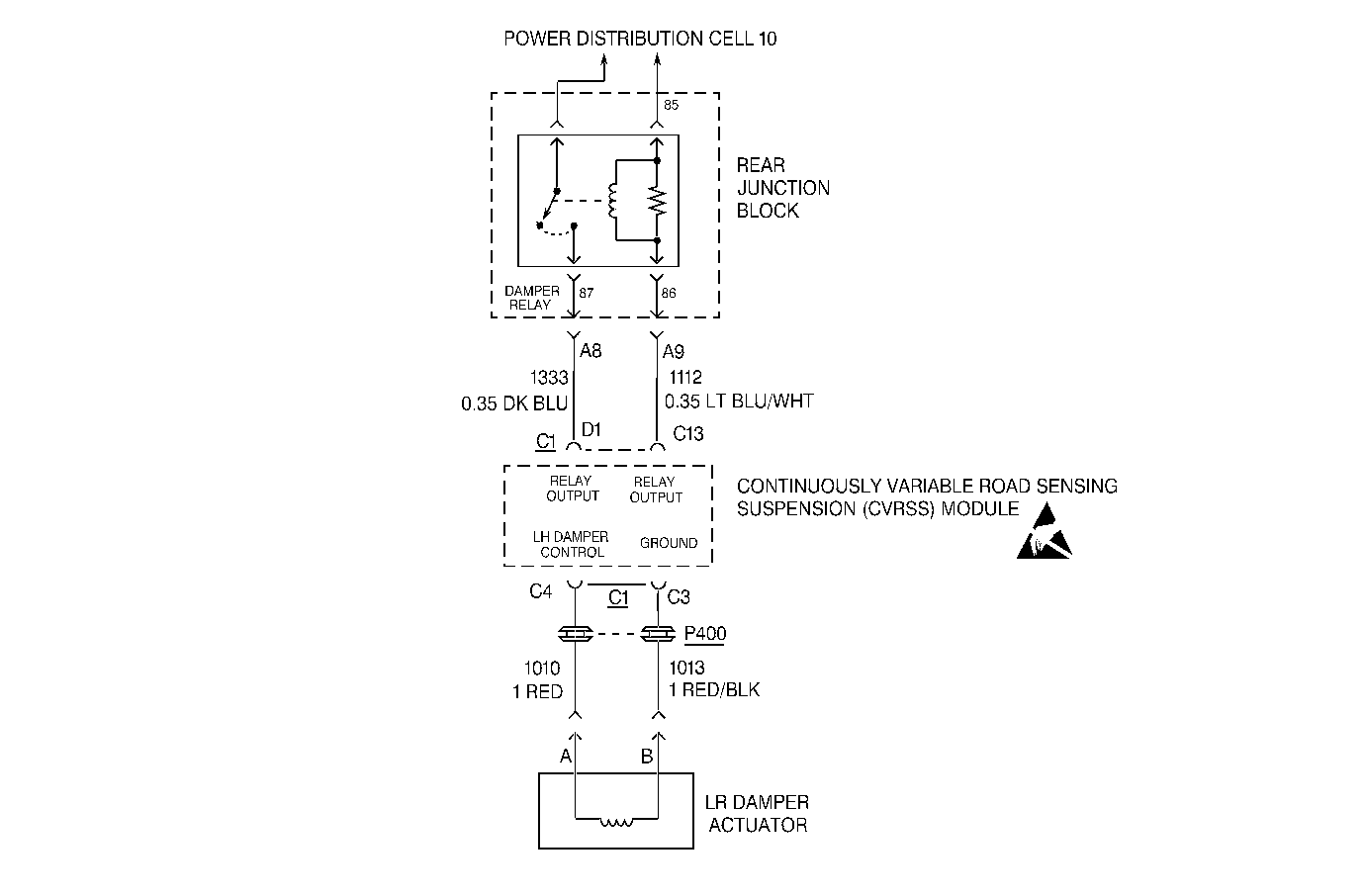Circuit Description

The LR damper actuator is driven by the CVRSS module via a method known as Pulse-Width Modulation (PWM). Battery voltage is modulated (switched on and off) at a high frequency (2.0 kHz), thus, controlling the amount of current delivered to the actuator. By controlling the amount of current to the actuator, the CVRSS module can then control the damping force in the damper. A higher level of damping force is achieved by providing correspondingly higher current levels, relating to higher percentages of PWM duty cycle.
The default damper state (with no battery voltage, and thus no current, provided to the attached actuator) is one that provides a minimum damping force.
Conditions for Setting the DTC
The DTC is set when the CVRSS module measures an ON-state feedback voltage greater than a preset fault threshold during a damper diagnostic test procedure.
The DTC is set when the CVRSS module performs a test procedure on each damper actuator approximately every 16 seconds. During this test procedure the damper actuator is briefly energized (ON-state test) and de-energized (OFF-state test). If, twice consecutively, the feedback voltage during the ON-state test is above the fault threshold, the corresponding DTC is set.
The DTC turns HISTORY when the CVRSS module no longer senses a short to battery voltage condition on the damper low-side drive.
Action Taken When the DTC Sets
| • | The LR damper actuator will be disabled by commanding 0 percent PWM duty cycle. The LR corner of the vehicle will be soft. |
| • | The SERVICE RIDE CONTROL message will be displayed. |
Conditions for Clearing the MIL/DTC
| • | Use the scan tool. |
| • | Use the On-Board diagnostic CLEAR RSS CODES feature. |
Test Description
Important:
• Do not backprobe the sensors, actuators, or any sealed connectors. • When all the diagnostics and repairs are complete, clear the DTCs
and verify the operation.
The number(s) below refer to the step number(s) on the diagnostic table.
-
This step checks for an internal short circuit condition in the actuator.
-
This step checks the CVRSS actuator harness for a short to voltage condition with the actuator disconnected. If voltage is indicated, there is short to voltage condition on CKT 1013.
-
This step checks the CVRSS actuator harness for a short circuit condition between CKT 1010 and CKT 1013.
Step | Action | Value(s) | Yes | No |
|---|---|---|---|---|
1 | Was the Road Sensing Suspension Diagnostic System Check performed? | -- | Go to Step 2 | |
2 |
Is the resistance value displayed within the specified range? | 9.5-15.5 ohms | Go to Step 3 | Go to Step 7 |
3 |
Is the voltage above the specified value? | 10 V | Go to Step 8 | Go to Step 4 |
4 | Check for continuity between CVRSS module connector C1 terminals C4 and C3 (harness side) with a DMM. Is continuity present? | -- | Go to Step 5 | Go to Step 6 |
5 | Repair the short circuit condition between CKTs 1010 and 1013. Is the repair complete? | -- | -- | |
6 |
Is DTC C1720 set? | -- | Go to Step 9 | |
7 | Replace the LR damper. Refer to Shock Absorber Replacement . Is the replacement complete? | -- | -- | |
8 | Repair the short to voltage condition in CKT 1013. Is the repair complete? | -- | -- | |
9 |
Important: The controller must be calibrated. Is the CVRSS control module calibrated? | -- | -- |
